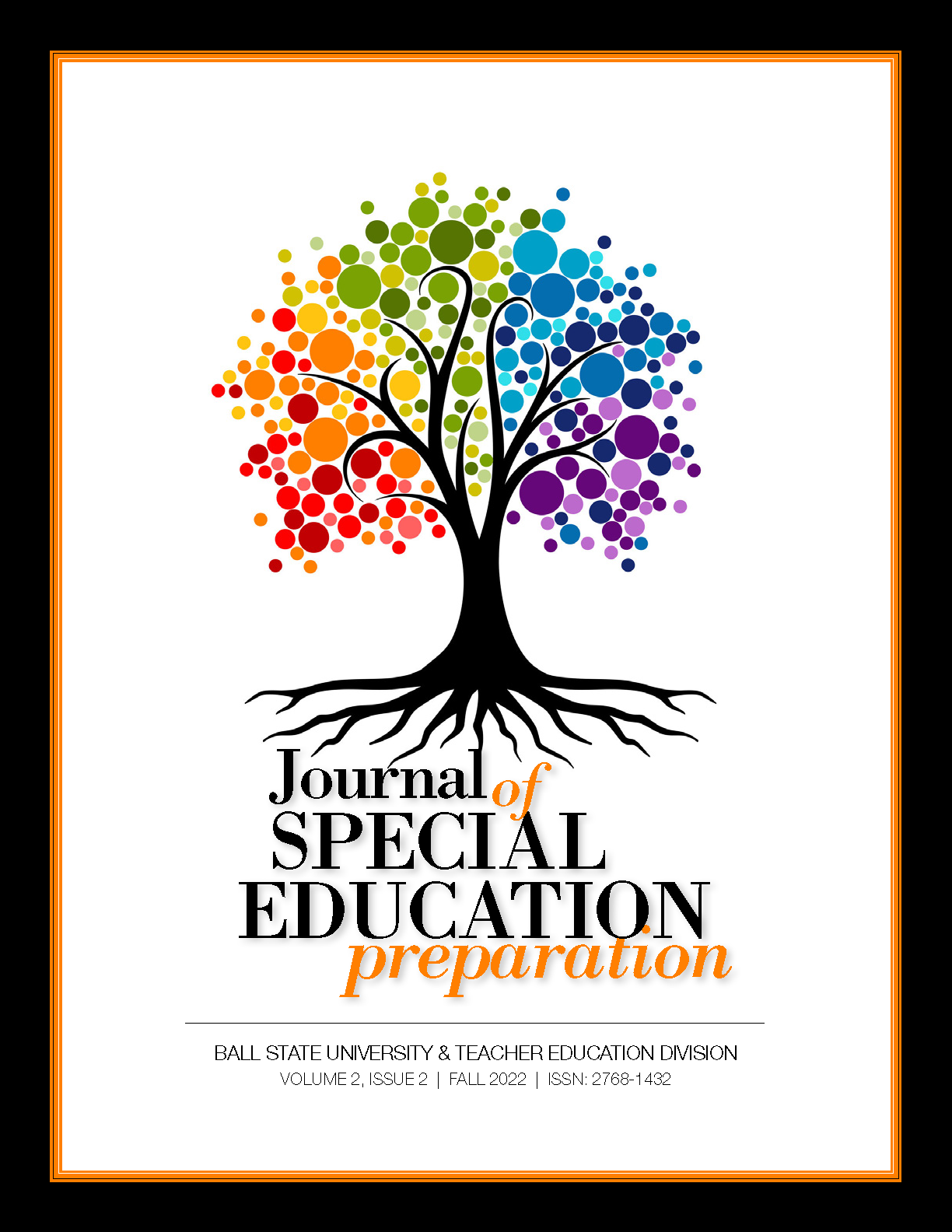Looking Behind Virtual Lenses: Field Experience, Modeling, Coaching, Feedback, Supervision, and Partnerships
DOI:
https://doi.org/10.33043/JOSEP.2.2.42-51Keywords:
field experience, modeling, coaching, partnerships, supervision, feedback, virtual, instruction, collaboration, assessmentAbstract
Small special education programs (SSEPs) are composed of limited faculty tasked with educating interns dispersed across large geographical areas (Reid, 1994). These needs underscore a call for more flexible educational program options. Moreover, Kebritchi et al. (2017) found professors in higher education institutions sought a variety of instructional methods to critically respond to barriers experienced by SEPPs. The purpose of this article is to highlight virtual methods utilized by SSEPs for field experiences, modeling,
coaching, feedback, supervision, and partnerships to leverage faculty expertise effectively and efficiently, to expand recruitment in programs, and to support teacher retention efforts. Using the Council for Exceptional Children (CEC) and Collaboration for Effective Educator Development, Accountability, and Reform (CEEDAR) High Leverage Practices (HLPs) of Instruction, Collaboration, and Assessment (McLeskey et al., 2017), this article will look behind the virtual lens to uncover how SSEPs faculty can support interns using a developmental and scaffolded approach.
Downloads
Downloads
Published
How to Cite
Issue
Section
License
Copyright (c) 2022 Tamara Lynn, Shantel Farnan, Jessica Rueter, Adam Moore

This work is licensed under a Creative Commons Attribution-NonCommercial-NoDerivatives 4.0 International License.


